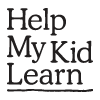What to do with this activity?
Placing pegs into holes on a peg board is great for developing your child's hand-eye co-ordination, and their control of hand and finger movements.
Start with bigger pegs and let them take the pegs out of the holes - this needs less control and skill. As your child gets better at it, let them put the pegs back into the holes. They will gradually learn the important skill of holding small items by pinching them between their thumb and one or two fingers. This is good practice for writing in the future.
As your child develops these holding and controlling skills, encourage them to play games with pegs and a peg board. They can sort each colour into its own section, or make a pattern - one blue, then one red, then one yellow, and repeat. If they are ready, try games that involve moving pegs on a board, like peg solitaire. Show them how to "jump" over a peg and then take out the peg that you jumped over. The aim of the game is to jump over and get rid of as many pegs as possible, and be left with just one peg in the centre. Have a look at this youtube video to see how it's done.
-
Why am I doing this?
There are at least four stages in learning to write. The first is movement - your child learning to control their body and their hands - reaching, feeling and holding things - is part of this first stage.
The second stage is making marks - seeing that if you put this crayon here and move it, it makes a mark.
Drawing is a third stage.
The fourth then is learning how to make letters and later words.
For your child, the more they are aware about how useful writing is, the better. Seeing you writing is great and you pointing out other people writing will help them see how useful it is too.
-
How can I do more?
It’s always good to keep crayons and paper close at hand, so that you can give them to your child anytime to play with.
Write words under your child’s drawing – like their name or what they have drawn – that will help them understand the meaning of words.
Later you could clip 10 or 12 of these drawings together to make a book. This will show your child how books can be made.
Let your child see you writing – notes, lists, letters and emails. If you don't write much yourself, show your child other people writing when you are out and about.
Encourage your child to use ‘pretend’ writing in play - writing their own name, notices or price lists. You could even give them a little notebook when you go to the shops or when they’re playing ‘shop’ with their friends.
Rate this activity
![]()
![]()
![]()
![]()
![]()
Based on 30 reviews
How would you rate it?
1 = Poor, 5 = Great.



